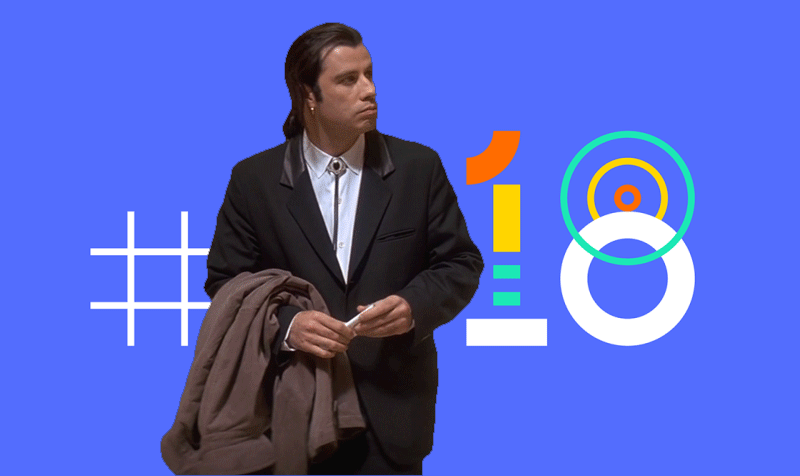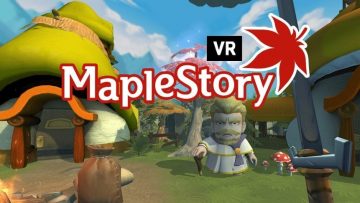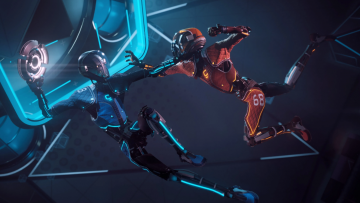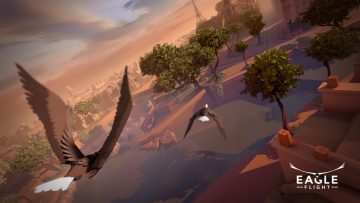
VR vs. Cheese
Last week on VR vs. I discussed all things immersive at this year’s F8, which took place now two weeks ago. About Facebook’s role in not only having to get through the event without disaster, but having to address all the fallout from Cambridge Analytica and – from our point of view – provide a significant update with regard to the business goings on at Oculus to maintain all the interest that it generated with the Oculus Go. That and the subsequent launch and delivery of the headset.
At the time I was actually quite praising of how the technology side had been expanded upon and I’m legitimately intrigued as to where Facebook’s ideas for virtual reality (VR) will go now that it seems VR is a ‘piece of the puzzle’ for its grander plans involving artificial intelligence, computer learning, image recognition, how it ties into its core social media strategy and all the other technology pies the brand has its fingers in. That, however, was two weeks ago. Last week was Google’s turn to step into the spotlight – and when it did there was…
Errr…
Not a lot, actually.

In all honesty, can you remember anything that was discussed or revealed during the initial Keynote? I wouldn’t be surprised if you didn’t. There was the usual staples. Technology for the hope for our children – not to the levels of Microsoft’s now annual NOW CLAP FOR THE YOUNG CHILDREN WE BROUGHT HERE moment from Build, thankfully. There was a minor touch on Google’s responsibility. A reminder that Waymo exists as an Alphabet company, including a claim about their driverless cars being the only ones operating on the road – which is a curious boast when that’s partly due to the recent accident and other testing being suspended. There was the biggest announcement/comment – that of the fixing of the cheeseburger emoji and its ‘cheese at the bottom’ blasphemy and the “defying physics” beer emoji. The truly big reveal was the announcement that Google Assistant can now ring up and make calls on your behalf, complete with mmm‘s, ahh‘s, err‘s and mm-hmm‘s. All of which was somewhere between ‘amazing’ and ‘downright terrifying’ – and something that definitely needs certain protocols before it gets rolled out.
And with that, that was pretty much your lot.
Now Peter’s already had his say on the matter, but heading in to Google I/O there was a few things we were expecting – or at least hoping for – from an immersive technology standpoint. There was probably going to be some sort of update about ARCore, not just a general update to the toolkit itself, but some boasting about how many people are using it and just how successful ARCore has been to date. Probably with a big commercial partner wheeled out to jointly announce Project X powered by it. Whilst there’d been no rumblings about it there was bound, bound, to be some sort of update regarding the Daydream. Some new partner using its standard schematic. New features. Some sort of update on the brand, in any case. And maybe, just maybe if we cross our fingers maybe a ‘VRCore’ or ‘MRCore’ announcement or something about a new iteration of the Pixel could also whistle past.
Unfortunately for those interested in augmented reality (AR) or virtual reality (VR), Google didn’t seems to be as invested in mentioning either during its ‘prime time’. There was reveals relating to immersive technology, don’t get me wrong; and plenty of sessions after the fact on VR and AR (mostly the latter). Lots of them. Especially on the Wednesday. But unless you were a seriously hardcore developer you weren’t going to get anything out of those. There was one big moment for AR in the keynote where Google revealed its fancy update to Google Maps, powered by AR. (The adorable fox receiving multiple thumbs up from the team.) But the strange thing was that during this segment AR wasn’t actually mentioned. No namecheck for ARCore, which clearly powers the upgrade, either.

Speaking of ARCore the update to that was one of the expected items that did come around, yet that wasn’t mentioned during the keynote. The fact the update was happening at all came out via the Google Developers blog.
VR fared not much better. No real mention during the keynote of Daydream, and only a handful of direct mentions during sessions. There was a small announcement in one session about a university taking up the application Labster after it partnered with Google but to be honest it’s just what others have been doing and working on for a while. Just with the Google name on it. That, and you can make your own Google Tours now – enhanced 360 degree videos. To quote my new Google Assistant: “That’s umm-err nice.”
It all felt so different to the week before. What with the lovely sweeping camera shots during the glitchy, laggy feeds (don’t you guys own YouTube, how the heck are you flunking that?) of the morning sessions showing rows and rows of empty seats. . Say what you want about Facebook, they see immersive tech – VR especially – as part of an integrated future. For Google, it’s a product line. One that ranked less importance than addressing the placement of a piece of cheese on an emoji.
And that’s pretty 💩.
This post was originally written by the author for VRFocus.






